Find out more about the Institute's research on CTLA-4.
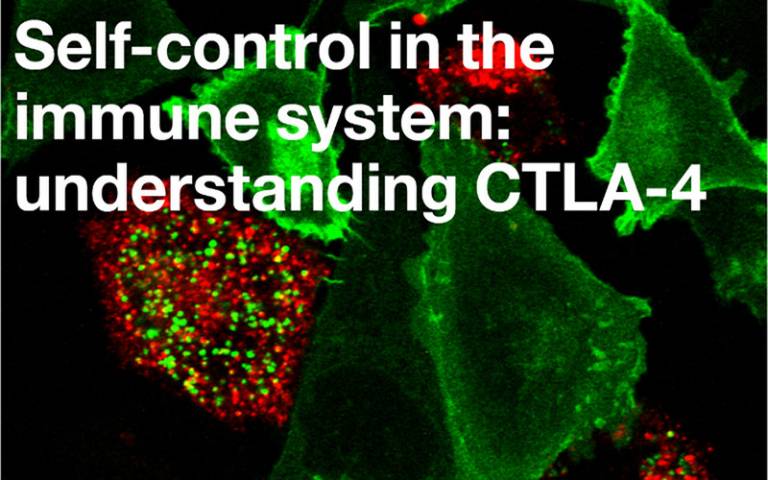
Our lab is interested in the fundamental mechanisms which regulate T cells within our immune system.
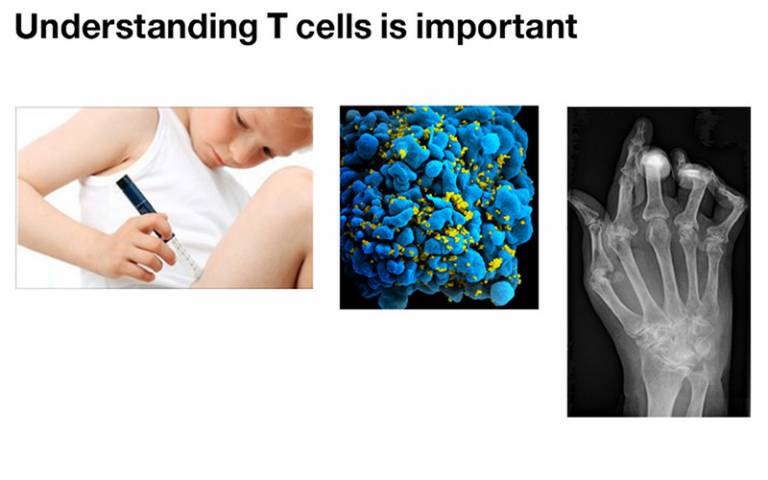
Whilst most of the time T cells like to fight invaders such as bacteria and viruses, when things go wrong we can get a number of diseases including: Rheumatoid arthritis, Type-I diabetes, Multiple sclerosis, Inflammatory bowel diseases, Immune deficiencies, Transplant rejection.
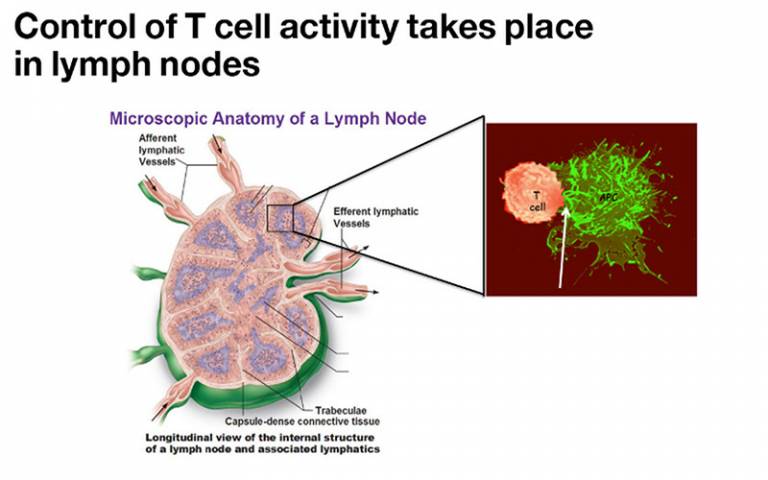
By destroying CD86, CTLA-4 can prevent CD28 from activating immune responses. This is carried out by specialised regulatory T cells.
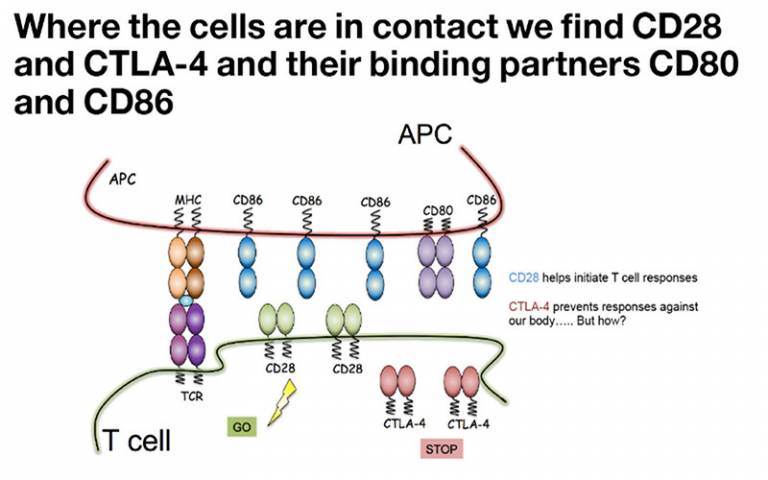
CD28 and CTLA-4 are the molecular checkpoint representing immunity to pathogens and immunity to self.
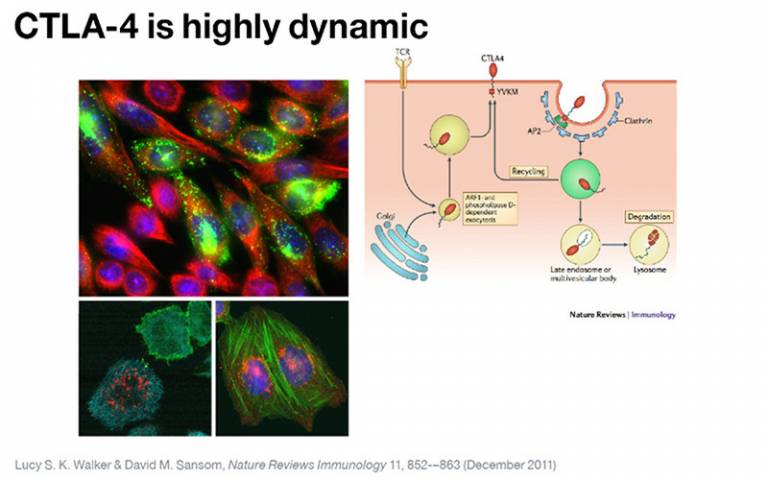
CTLA-4 is highly dynamic and moves rapidly around inside the cell in vesicles, briefly visiting the cell surface.
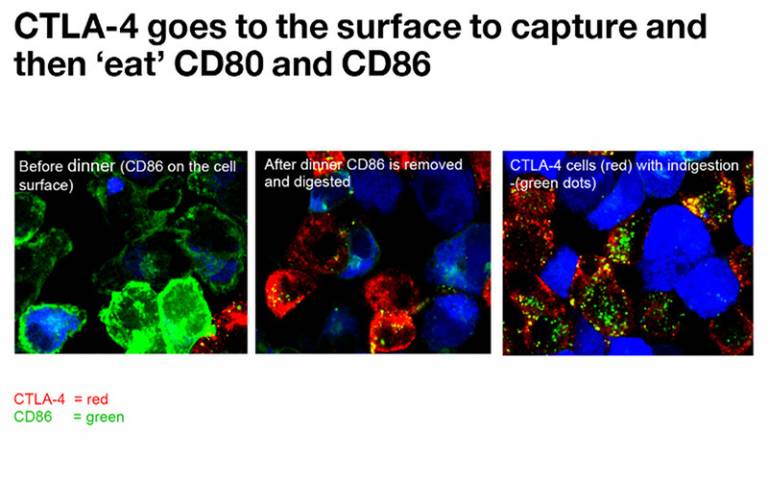
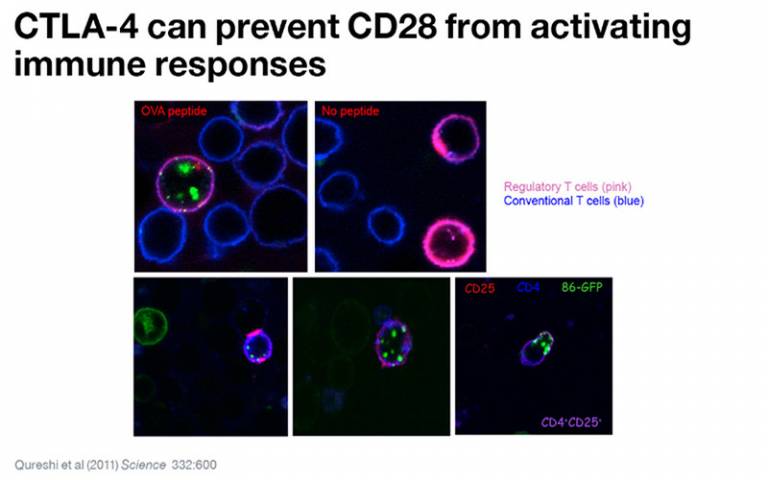
Lymph nodes are bean-like structures that swell up every time you get a sore throat. Here T cells and antigen presenting cells (APC) meet. We are interested in what happens when these cells contact each other.
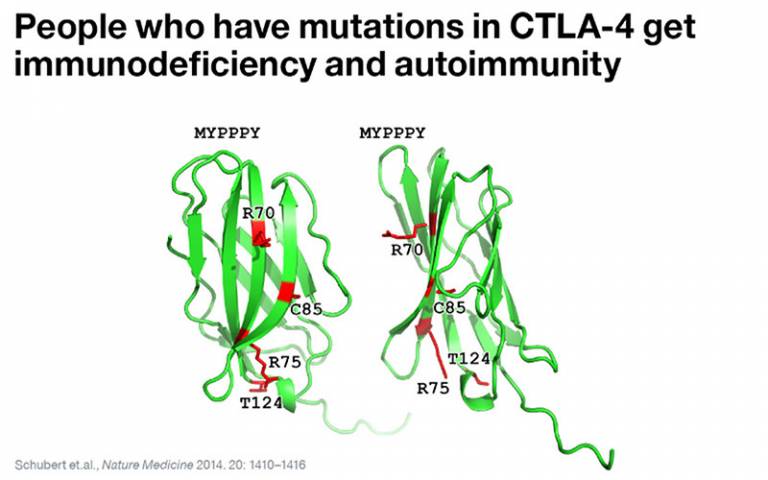
CTLA-4 crystal structure showing position of deleterious amino acid mutations (red).
 Close
Close

